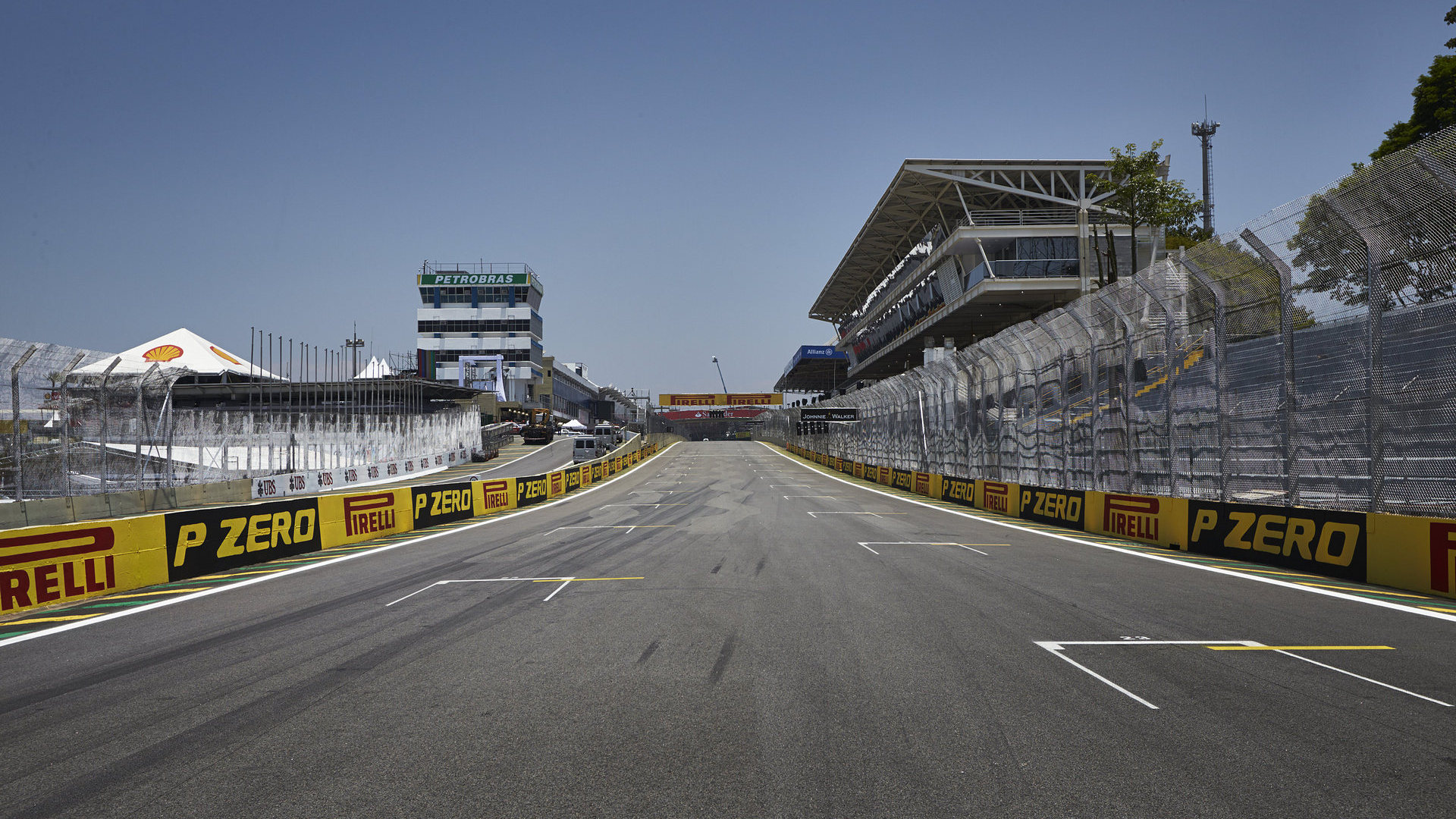A new immigrant detention partnership nicknamed after Indiana's iconic racetrack inspires backlash
A new immigrant detention partnership nicknamed after Indiana's iconic racetrack inspires backlash
You may have heard whispers, seen headlines, or perhaps felt the growing tension surrounding a significant development in immigration policy. We're talking about a new immigrant detention partnership nicknamed after Indiana's iconic racetrack inspires backlash across various sectors. This isn't just another policy change; it's a controversial initiative that has quickly become a focal point for debate, drawing criticism from advocacy groups, community leaders, and concerned citizens alike. Our aim is to break down what this partnership entails, why it's stirring such strong reactions, and what it might mean for the future of immigration detention in the United States.
Understanding the nuances of this situation is crucial, especially as discussions around immigration remain at the forefront of national discourse. From its unique, perhaps even flippant, nickname to the serious implications for human rights and local communities, this partnership demands a closer look. Let's delve into the specifics and explore the multifaceted reactions it has provoked.
Understanding the "Indy 500" Partnership: What Is It?
The moniker "Indy 500 partnership" isn't an official government designation but rather a nickname coined by critics, cleverly linking the rapid pace of its implementation and the potential scale of its operations to Indiana's famous high-speed race. At its core, this partnership represents an agreement between a federal agency, likely Immigration and Customs Enforcement (ICE), and local entities, possibly private corporations or county jails, to expand the capacity and scope of immigrant detention facilities. It aims to streamline the detention process, but its critics argue it prioritizes speed over human dignity.
This initiative is part of a broader trend of outsourcing immigration detention, which has been a contentious issue for years. Proponents argue it's a necessary measure for managing the flow of migrants and asylum seekers, ensuring compliance with immigration laws. However, the specific structure and secrecy surrounding this particular arrangement have fueled much of the opposition, making it a hot topic in discussions about immigrant rights.
Origins of the "Indy 500" Nickname and Its Relevance
The "Indy 500" nickname serves as a potent symbol. It highlights the perceived rush to establish these facilities and the sheer volume of individuals that could be processed through them. Critics use it to draw attention to the potential for dehumanization when speed and capacity become the primary drivers of policy, rather than due process or humanitarian considerations. The cultural association with a fast-paced, high-stakes event implicitly criticizes the lack of a careful, measured approach to a sensitive issue.
Key Players Involved in the Partnership
While specific details are often shrouded in bureaucratic language, the primary federal agency involved is typically Immigration and Customs Enforcement (ICE). On the local level, participation may include county sheriffs' departments, private corrections companies, and even some local government entities looking for potential economic benefits. This blend of federal mandate and local execution creates a complex web of accountability, making it challenging for the public to fully grasp the operational dynamics and oversight mechanisms. The involvement of private entities, in particular, often raises concerns about profit motives influencing detention conditions.
Why Does "A New Immigrant Detention Partnership Nicknamed After Indiana's Iconic Racetrack Inspire Backlash"?
The backlash against this partnership is multifaceted, stemming from a variety of ethical, humanitarian, and practical concerns. Critics argue that expanding detention capacity, especially through potentially opaque local agreements, only exacerbates existing problems within the immigration system. It raises fundamental questions about civil liberties, human dignity, and the role of local communities in federal immigration enforcement.
Concerns Over Transparency and Oversight
One of the primary drivers of public opposition is the perceived lack of transparency surrounding these agreements. Many details of the "Indy 500" partnership, including financial arrangements and operational protocols, are often not readily available to the public. This opacity makes it difficult for watchdog groups and the public to ensure adequate oversight, leading to fears of accountability gaps and potential abuses. Without clear guidelines and public scrutiny, the risk of substandard conditions or human rights violations increases significantly.
Humanitarian and Ethical Objections
Advocacy groups vehemently oppose the expansion of immigrant detention on humanitarian grounds. They highlight that detention, particularly for asylum seekers and those with no criminal record, can cause significant psychological distress and disrupt family units. Concerns include: access to legal counsel, medical care, and general living conditions. Furthermore, the practice of detaining individuals indefinitely while their cases are processed raises profound ethical questions about due process and human rights, leading many to believe that alternatives to detention should be prioritized.
- Limited access to legal services for detainees.
- Inadequate medical and mental healthcare provision.
- Separation of families, including parents from children.
- Conditions in facilities often failing to meet basic standards.
- Lack of independent oversight and accountability for reported abuses.
Economic and Local Impact Concerns
While some local governments might see financial incentives in hosting detention facilities, many residents and economists raise concerns about the long-term economic and social impact. The presence of a large detention center can strain local resources, including emergency services and public health systems. Moreover, the moral implications of profiting from detention often lead to community divisions and a negative perception of the area. There are also debates about whether such partnerships truly bring sustainable economic benefits, or merely short-term contracts.
Stakeholder Reactions to the "Indy 500" Partnership
The unveiling of this new immigrant detention partnership has ignited a firestorm of reactions from various stakeholders, each approaching the issue from their unique vantage point. Understanding these diverse perspectives is essential to grasping the full scope of the controversy and the intense scrutiny this "Indiana's iconic racetrack" inspired partnership faces.
Official Statements and Government Stances
Federal agencies involved typically defend such partnerships as necessary for national security and efficient immigration enforcement. They often emphasize the legal requirement to detain individuals awaiting deportation or asylum hearings. Local governments entering into these agreements may cite economic benefits, such as job creation and revenue, as their rationale. However, their public statements are often met with skepticism from advocacy groups who argue that these benefits come at too high a human cost.
Activist Group Responses and Protests
Immigrant rights organizations, civil liberties groups, and humanitarian aid agencies have been among the most vocal opponents. They have organized protests, filed lawsuits, and launched public awareness campaigns to highlight the alleged abuses and systemic issues associated with expanded detention. Their core argument revolves around the belief that detention should be a last resort, not a default, especially for vulnerable populations. These groups are relentless in their efforts to advocate for more humane and cost-effective alternatives.
- Organizing local and national protests to raise public awareness.
- Providing legal aid and support to detained immigrants.
- Lobbying lawmakers to reform immigration detention policies.
- Conducting investigations and releasing reports on detention conditions.
Community Voices and Local Impact
Communities potentially impacted by these facilities often find themselves divided. While some residents welcome the promised jobs, others express profound moral objections and concerns about increased surveillance, potential racial profiling, and the changing social fabric of their neighborhoods. Local activists frequently collaborate with national organizations to amplify their voices and challenge decisions made by their local authorities, underscoring the deep seated community concerns about the new immigrant detention partnership.
The Broader Context of Immigration Detention Policies
The "Indy 500" partnership doesn't exist in a vacuum. It is a symptom of and contributor to a complex, evolving landscape of immigration detention policies in the United States. For years, the U.S. has grappled with how to manage large numbers of undocumented immigrants and asylum seekers, leading to various detention strategies. This latest initiative reflects ongoing debates about border security, humanitarian concerns, and the role of the private sector in public services.
National Immigration Policy Trends
Over the past decades, U.S. immigration policy has seen significant shifts, often oscillating between enforcement-heavy approaches and more lenient or compassionate stances. Current trends indicate a renewed focus on deterrence and rapid processing, which naturally leads to increased detention needs. This context explains why initiatives like the Indiana racetrack-nicknamed partnership gain traction, even amidst considerable opposition. Policies often reflect the political climate and perceived national security imperatives.
Previous Detention Models and Their Challenges
Historically, immigration detention has evolved from temporary holding facilities to a vast network of dedicated centers, including many run by private corporations. Each model has faced its own set of challenges, from overcrowding to allegations of abuse and lack of medical care. The backlash against "a new immigrant detention partnership nicknamed after Indiana's iconic racetrack inspires backlash" echoes these past criticisms, suggesting a systemic problem rather than an isolated incident. Learning from these historical challenges is vital for moving forward.
What's Next for This Controversial Partnership?
The future of this new immigrant detention partnership is uncertain and likely subject to continued legal and public challenges. The intense scrutiny and vocal opposition it has generated suggest that its implementation will not be smooth or universally accepted. What unfolds next will depend on a combination of legal rulings, shifts in public opinion, and the political will of both federal and local authorities. The pressure on decision-makers is immense, coming from various directions.
Potential Legal Challenges and Litigation
Advocacy groups are actively exploring and pursuing legal avenues to challenge the legality and constitutionality of aspects of this partnership. Lawsuits might focus on transparency issues, alleged human rights violations, or procedural irregularities in the contracting process. Any successful litigation could significantly impede or even halt the partnership's operations, forcing a reconsideration of its scope and terms. Legal battles are often protracted, but they can be powerful tools for change.
Ongoing Public Advocacy and Media Attention
The media will continue to play a crucial role in shaping public perception and maintaining pressure on authorities. Sustained public advocacy, including protests, petitions, and grassroots organizing, will also be vital in keeping the issue on the political agenda. The collective voice of concerned citizens and organizations can exert significant influence, potentially leading to policy adjustments or even the abandonment of the partnership. Keeping the public informed and engaged is key to this effort.
Potential Policy Shifts and Alternatives
Ultimately, the controversy might push policymakers to explore and implement alternative, more humane approaches to immigration management. These could include community-based support programs, electronic monitoring, or expanded use of alternatives to detention that allow individuals to live with their families while their cases proceed. The debate around this "Indy 500" inspired partnership could serve as a catalyst for broader reforms, moving towards a system that balances enforcement with compassionate treatment.
Conclusion: The Ongoing Debate
The emergence of a new immigrant detention partnership nicknamed after Indiana's iconic racetrack inspires backlash, highlighting the deep divisions and ethical quandaries at the heart of U.S. immigration policy. This initiative, while framed by some as an efficient solution to managing migrant flows, is widely criticized for its lack of transparency, potential humanitarian abuses, and the ethical implications of profiting from detention. The ongoing debate underscores a fundamental tension between enforcement priorities and human rights concerns.
As discussions continue, the fate of this partnership, and indeed the broader direction of immigration detention in the U.S., remains uncertain. The powerful voices of advocates, communities, and legal experts will undoubtedly continue to shape its trajectory, pushing for accountability, transparency, and more humane alternatives. Your understanding of these complex issues is vital as we collectively navigate this challenging landscape.
Frequently Asked Questions (FAQ)
- What is the "Indy 500" immigrant detention partnership?
- It's a nickname for a controversial new agreement, likely between a federal agency (like ICE) and local entities (such as private companies or county jails) in Indiana, to expand or manage immigrant detention facilities. The nickname implies a rapid, large-scale implementation.
- Why is this partnership controversial?
- It faces backlash due to concerns over lack of transparency, potential for human rights abuses in detention, inadequate oversight, ethical objections to profiting from detention, and the belief that it expands a system that should be reformed or reduced.
- Who are the main critics of this partnership?
- Key critics include immigrant rights advocacy groups, civil liberties organizations, humanitarian aid agencies, and local community members who are concerned about the ethical, social, and economic impacts on their areas.
- What are the proposed alternatives to detention?
- Alternatives include community-based support programs, electronic monitoring, case management services, and bond programs that allow individuals to remain in their communities while their immigration cases are processed, which are often more humane and cost-effective.
- Will this partnership be stopped?
- Its future is uncertain. It faces significant legal challenges, ongoing public advocacy, and media scrutiny. The outcome will depend on legal rulings, public pressure, and political decisions, but the strong opposition indicates it will be an uphill battle for its proponents.
A new immigrant detention partnership nicknamed after Indiana's iconic racetrack inspires backlash Wallpapers
Collection of a new immigrant detention partnership nicknamed after indiana's iconic racetrack inspires backlash wallpapers for your desktop and mobile devices.

Wonderful A New Immigrant Detention Partnership Nicknamed After Indiana's Iconic Racetrack Inspires Backlash Scenery
Beautiful a new immigrant detention partnership nicknamed after indiana's iconic racetrack inspires backlash wallpaper with stunning details and colors.

Wonderful A New Immigrant Detention Partnership Nicknamed After Indiana's Iconic Racetrack Inspires Backlash Scenery
Beautiful a new immigrant detention partnership nicknamed after indiana's iconic racetrack inspires backlash wallpaper with stunning details and colors.

Amazing A New Immigrant Detention Partnership Nicknamed After Indiana's Iconic Racetrack Inspires Backlash Scenery
Amazing a new immigrant detention partnership nicknamed after indiana's iconic racetrack inspires backlash background image for your devices.

Spectacular A New Immigrant Detention Partnership Nicknamed After Indiana's Iconic Racetrack Inspires Backlash Photo
High quality a new immigrant detention partnership nicknamed after indiana's iconic racetrack inspires backlash image perfect for desktop or mobile wallpaper.

Spectacular A New Immigrant Detention Partnership Nicknamed After Indiana's Iconic Racetrack Inspires Backlash Shot
High quality a new immigrant detention partnership nicknamed after indiana's iconic racetrack inspires backlash image perfect for desktop or mobile wallpaper.

Beautiful A New Immigrant Detention Partnership Nicknamed After Indiana's Iconic Racetrack Inspires Backlash Photo
High quality a new immigrant detention partnership nicknamed after indiana's iconic racetrack inspires backlash image perfect for desktop or mobile wallpaper.

Wonderful A New Immigrant Detention Partnership Nicknamed After Indiana's Iconic Racetrack Inspires Backlash Shot
Beautiful a new immigrant detention partnership nicknamed after indiana's iconic racetrack inspires backlash wallpaper with stunning details and colors.

Wonderful A New Immigrant Detention Partnership Nicknamed After Indiana's Iconic Racetrack Inspires Backlash Shot
Beautiful a new immigrant detention partnership nicknamed after indiana's iconic racetrack inspires backlash wallpaper with stunning details and colors.

